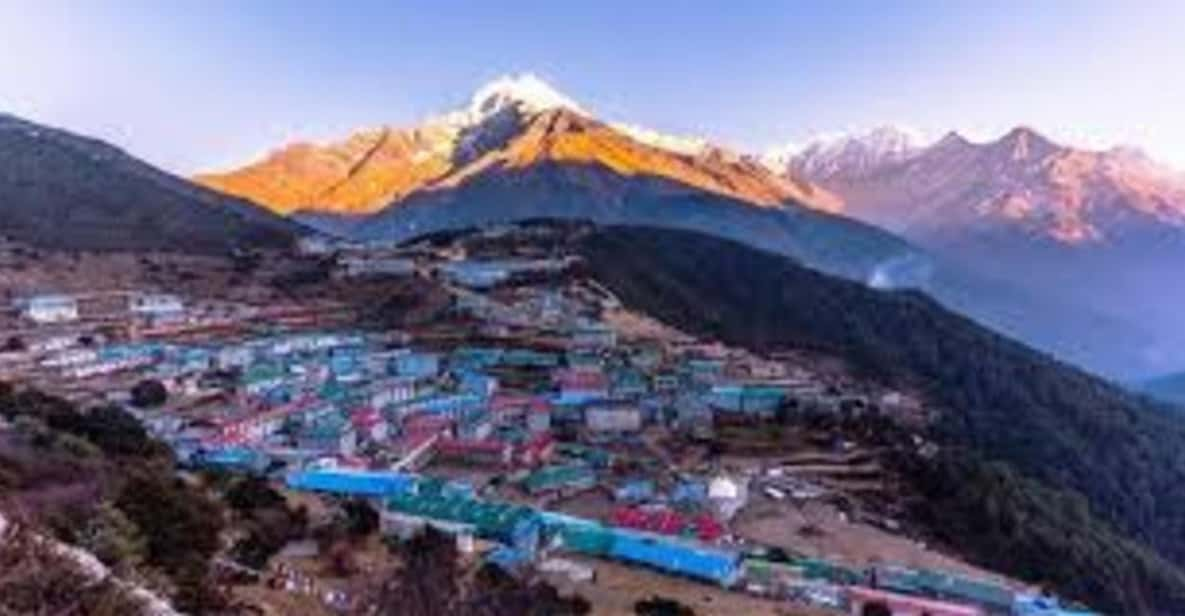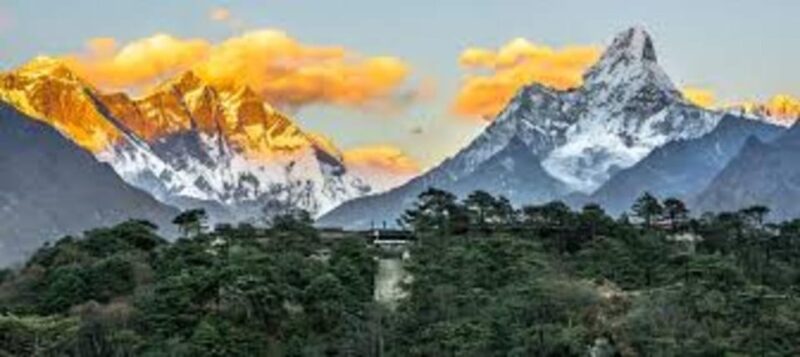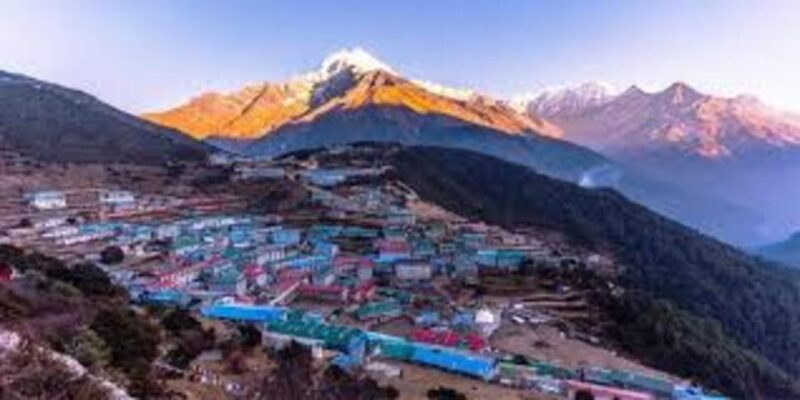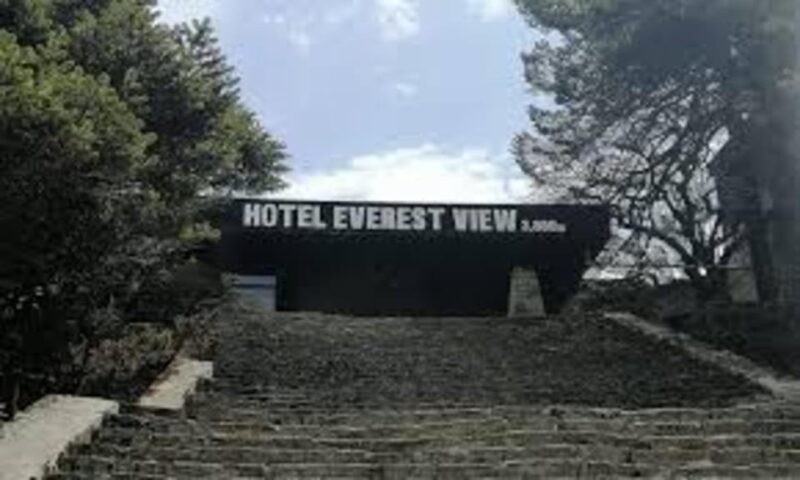The Everest Panorama Trek, reaching an impressive altitude of 3,962 meters, presents trekkers with an opportunity to witness breathtaking views of some of the world’s most iconic peaks, including Mt. Everest and Mt. Ama Dablam. Along the way, they’ll experience the vibrant culture of the Sherpa people, explore ancient monasteries, and traverse diverse landscapes that range from lush forests to striking glaciers. For those seeking a balanced adventure, this trek promises both natural beauty and culture, but what specific preparations should trekkers consider to make the most of this unforgettable journey?
Key Points

- The Everest Panorama Trek offers stunning views of Mt. Everest and Mt. Ama Dablam at an elevation of 3,962 meters.
- This trek showcases diverse landscapes, including lush forests and glaciers, enriching the trekking experience.
- Cultural immersion includes visits to Sherpa villages and ancient monasteries, enhancing the journey’s uniqueness.
- The best trekking seasons for this trek are January to May and September to December, ensuring stable weather.
- Professional guides and porters enhance safety and navigation, making the trek accessible for those with moderate experience.
Trek Overview and Highlights

The Everest Panorama Trek offers breathtaking views of iconic peaks like Mt. Everest and Mt. Ama Dablam, making it a fantastic choice for those seeking an unforgettable Himalayan experience without the intensity of the Everest Base Camp trek.
This trek showcases diverse landscapes, from lush forests to stunning valleys and glaciers, while immersing trekkers in the rich culture of Sherpa villages and monasteries.
Starting with a scenic flight to Lukla, adventurers follow the Dudh Koshi River to the vibrant Namche Bazaar.
Ideal for those with moderate trekking experience, the best seasons for this trek are January to May and September to December.
It’s a perfect way to witness the majesty of the Himalayas without the extreme challenges of higher altitudes.
You can also read our reviews of more hiking tours in Namche Bazar
Detailed Itinerary

With the stunning views and cultural experiences in mind, trekkers can look forward to a well-structured 7-day itinerary that maximizes their adventure in the Everest region. Each day offers unique highlights, ensuring an unforgettable experience.
| Day | Activity |
|---|---|
| 1 | Arrival in Kathmandu |
| 2 | Fly to Lukla, trek to Phakding |
| 3 | Trek from Phakding to Namche Bazaar |
| 4 | Hike to Hotel Everest View |
| 5 | Trek from Namche to Lukla |
| 6 | Fly back to Kathmandu |
| 7 | Final departure |
This itinerary blends scenic treks with cultural insights, showcasing the best of the Everest region while maintaining a moderate pace for trekkers.
Inclusions and Accommodations

Trek packages include essential services like hotel transfers, quality accommodations during the journey, and meals to ensure a comfortable experience.
Travelers can expect 4 nights of lodging in cozy lodges while trekking, along with a comfortable stay in Kathmandu. The package also provides breakfast each day, offering a great start before hitting the trails.
Plus, round-trip flights between Kathmandu and Lukla, necessary permits, and taxes are included.
A professional English-speaking guide and a porter service (one porter for every two trekkers) ensure that the experience is smooth and enjoyable.
With a first-aid kit on hand, trekkers can feel secure, knowing their safety is prioritized throughout the adventure.
Essential Packing List

Packing for the Everest Panorama Trek requires thoughtful consideration of items that ensure comfort and safety while navigating the stunning Himalayan terrain.
Travelers should prioritize a good pair of hiking shoes, breathable clothing, and a warm jacket to adapt to changing weather conditions.
Essential accessories include sunglasses, a sun hat, and sunscreen to protect against high-altitude sun exposure. A lightweight rain jacket is crucial for unexpected showers, while gloves and a long-sleeved shirt provide extra warmth.
Don’t forget personal medications, a small towel, and some cash for local purchases.
Packing light is key, so choose versatile items that can be layered.
With the right gear, trekkers can fully enjoy the breathtaking views and cultural experiences along the trail.
More Great Tours NearbySafety Considerations
Safety is crucial during the Everest Panorama Trek, as trekkers must be prepared for various challenges that may arise in the unpredictable Himalayan environment.
Acclimatization is essential to prevent altitude sickness, so trekkers should listen to their bodies and take rest days if needed. Weather conditions can change rapidly, so having flexible plans is important.
Trekkers should also carry a well-stocked first-aid kit and personal medications. It’s advisable to trek with a guide who can navigate the terrain and provide support.
Lastly, keeping communication open with fellow trekkers and guides can enhance safety. With the right precautions and preparations, trekkers can enjoy a memorable and secure adventure in the majestic Himalayas.
Best Trekking Seasons
The Everest Panorama Trek is best enjoyed during the clear, mild months of January to May and September to December, when the weather is typically stable and the stunning mountain views are at their peak.
These periods provide trekkers with optimal visibility, allowing them to fully appreciate the majestic landscapes of the Himalayas.
January to March offers crisp, cool air, while April and May bring warmer temperatures and blooming rhododendrons.
Conversely, September to December features clear skies and vibrant fall foliage, perfect for photography enthusiasts.
Trekkers should avoid the monsoon season from June to August, as heavy rainfall can lead to challenging conditions.
Planning a trek during these ideal seasons ensures a memorable adventure filled with breathtaking scenery.
Cultural Experiences

Exploring the vibrant Sherpa culture during the Everest Panorama Trek offers travelers a unique glimpse into the traditions, customs, and daily life of this remarkable mountain community.
Visitors can witness the warm hospitality of the Sherpa people, often sharing meals and stories in cozy lodges.
The trek includes stops at ancient monasteries, where monks engage in prayer ceremonies, providing insight into the spiritual life that permeates the region.
Travelers also have the chance to participate in local festivals, experiencing the colorful attire, music, and dance that define Sherpa celebrations.
As trekkers navigate through charming villages, they’ll gain an appreciation for the resilience and resourcefulness of this culture, making their journey not just a trek but a rich cultural experience.
Booking Information
Booking the Everest Panorama Trek is straightforward, with various options available to suit travelers’ preferences and schedules.
Tour operators offer flexible packages that include everything from accommodations to meals and transportation. Travelers can choose between group or private treks, depending on their comfort level and social preferences.
Most operators provide a reserve now and pay later option, allowing for ease of planning. Plus, travelers can cancel up to 24 hours in advance for a full refund, offering peace of mind.
It’s essential to check for the best trekking seasons and ensure proper gear is packed. With a little preparation, booking this adventure can be a breeze, paving the way for an unforgettable experience in the Himalayas.
Frequently Asked Questions
What Is the Best Time to Book the Trek?
When considering the best time to book a trek, travelers should aim for January to May or September to December. These months provide the most favorable weather conditions and stunning views, enhancing the trekking experience.
Are There Age Restrictions for Participants?
Regarding age restrictions, organizers typically require participants to be at least 12 years old. However, they recommend consulting with a guide for specific treks, as conditions and challenges may vary based on individual experience and fitness.
How Physically Demanding Is the Trek?
The trek’s moderately demanding, suitable for those with basic fitness. It requires stamina for ascending and descending trails but doesn’t involve extreme challenges. Participants should prepare adequately to enjoy the beautiful landscapes and cultural experiences.
Can I Find ATMS During the Trek?
During the trek, one won’t find ATMs in remote areas. It’s essential to withdraw cash in advance, especially in larger towns. Travelers should plan accordingly to ensure they have enough funds throughout their journey.
Is Travel Insurance Required for the Trek?
Travel insurance isn’t strictly required, but it’s highly recommended. It protects trekkers from unexpected events, including trip cancellations or medical emergencies. Having coverage gives peace of mind during the adventure, ensuring safety and security.
Recap
To sum it up, the Everest Panorama Trek offers an incredible blend of breathtaking scenery, rich culture, and unforgettable experiences.
Trekkers can revel in the majestic views of towering peaks like Mt. Everest and enjoy the vibrant Sherpa culture.
With its moderate difficulty, it’s perfect for those looking to explore the Himalayas without the extreme challenges of higher-altitude treks.
So, if you’re seeking adventure and beauty, this trek is definitely worth considering for your next journey!
You can check availability for your dates here:More Hiking & Trekking Tours in Namche Bazar
More Tour Reviews in Namche Bazar
Not for you? Here's more nearby things to do in Namche Bazar we have reviewed
- Everest Base Camp Trek – 12 Days Guided Trek
- Lobuche Peak Climbing 2025/2026
- Everest Panorama Trek-10 Days
- Lobuche Peak Climbing with EBC TREK-18 Days
- Everest Base Camp, Cho-La Pass, and Gokyo Trek
- Guided: Everest Base Camp Trek
- Pokhara: 11-Day Everest Base Camp Trek
- Everest Base Camp Trek
- Everest: 6-Day Panorama Trek
- 12 days Everest Base Camp Trek
- 5-Day Everest Tour with Breakfast at Everest View Hotel
- 8 DAYS EVEREST PANORAMA VIEW TREK FROM KATHMANDU
